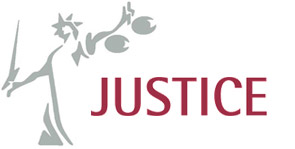JUSTICE launched its latest ground-breaking report – “What is a Court?” – on 17 May.
It comes as Her Majesty’s Courts and Tribunals Service (HMCTS) plans to reform and revolutionise the estate of court and tribunals buildings. On 11 February, HMCTS announced the closure of 86 courts, while the Chancellor committed in November 2015 more than £738 million for the modernisation and digitisation of the courts.
What is a Court? is the product of a JUSTICE Working Party established in Autumn 2015 to inform the HMCTS reform programme to maximise access to justice. The Working Party was chaired by Alexandra Marks – a partner at Linklaters and a Deputy High Court Judge – who has been a JUSTICE member since the start of her career.
Spotlighting key themes
This report is underpinned by two pressing themes which are relevant across the legal community: increasing use of technology and adaptation to a challenging economic climate.
The report also touches on a number of other issues. These include an increasing use of Alternative Dispute Resolution, and the modern prevalence of deciding cases on papers rather than oral evidence.
What is a Court? is a comprehensive starting point for discussion of upcoming changes to the justice system in England and Wales.
Law firms and chambers value students’ awareness of how our profession is transforming and we hope that our student members will find the report helpful for their own professional development.
What does JUSTICE recommend?
What is a Court? makes a number of recommendations:
- JUSTICE thinks court and tribunal buildings should be reimagined as ‘justice centres’, concentrating the range of judicial activities and services in one place. This means bringing together not only the different courts and tribunals (e.g. the Magistrates Court or the Employment Tribunal), but also advice services and resources.
- Justice centres would be comprised of ‘justice spaces’ rather than courtrooms. What is a Court? recommends three types of permanent justice space which can be adapted according to the specific characteristics of each case – see figure 1 below.
- We further recommend the introduction of an online court, and the use of ‘pop-up courts’ in buildings temporarily used as courts, particularly in the most rural areas.
What is a Court? offers a fascinating perspective on how the day-to-day conduct of legal services might change in the next few years. We hope that it will help inform the work of Lord Justice Briggs, who is currently conducting a review on the structure of civil courts in England and Wales.
As with all of our work, What is a Court? demonstrates how a leading law reform organisation presents its ideas for change. We hope that it helps inform your thinking on how the justice system could work better and inspires you to get involved in law reform.
What can you do next?
Sir Ernest Ryder, the Senior President of Tribunals, has said that What is a Court? “couldn’t have been more helpful, thought-provoking or clear”.
These are important issues that will affect the shape of the legal community and your future career. Yet, this is a subject which is infrequently covered in student legal media. A simple step to get more involved would be to blog or write for your student law review on JUSTICE’s proposals and on the Briggs Review.
We’d love to hear about anything you publish on the subject by email to jsn@justice.org.uk or on Twitter @JUSTICEhq.
